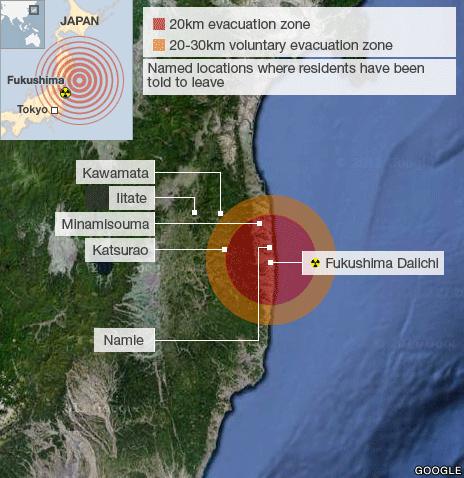Japan nuclear crisis: Fukushima shutdown for January
- Published

Residents from around the Fukushima plant have been allowed to make brief visits to their houses
Japan still believes it can end its nuclear crisis within months, while accepting damage from March's quake and tsunami was worse than first thought.
The government and the operator of the Fukushima Daiichi power plant recently revealed the No 1 reactor suffered a near complete meltdown within hours of the disaster.
But they still believe a "cold shutdown" is possible by January.
The crisis forced 80,000 people who lived within 20km of the plant to flee.
This week evacuations began from towns further away from the stricken plant in northern Japan, with the government saying a build-up of radiation could pose a danger to health, says the BBC's Roland Buerk in Tokyo.
Melted floor
In recent days the plant's operator has revealed that the damage sustained by the reactors immediately after the magnitude-9.0 earthquake and tsunami was far more severe than initially thought.
Officials from the Tokyo Electric Power Company (Tepco) say fuel rods at the plant began to melt down as early as six hours after the 11 March tsunami knocked out vital cooling systems.
Within 16 hours most of the fuel in reactor 1 had melted to the floor of the pressurised chamber housing the reactor, creating a hole that allowed 3,000 tonnes of contaminated water to leak into the basement of the building.
Officials said the fuel in reactors number 2 and 3 was also exposed to the air and might have largely melted too.
The discovery has forced Tepco to abandon a plan to flood the reactors to cool them in a process known as "water entombment".
Instead, says our correspondent, workers will try to set up a stable cooling system by circulating the water already there.
Some experts fear the water could pose a serious environmental hazard to groundwater and the Pacific Ocean.
Tepco also said it would step up its monitoring of radiation in nearby seawater and study what could be done to prevent contamination of groundwater.
But the company says it intends to stick to the timetable it announced last month, to bring the power station to a cold shutdown by January.
"We know that there are a lot of defining factors and risks, but we still want to complete the first steps by July and the remainder of the plan within nine months," said Sakae Muto, a Tepco vice president.
He said it was not possible to give a figure for the Fukushima clean-up.
A giant barge which will be used to store radioactive water is currently on its way to Fukushima
"It's something we will have to study over time," Sakae Muto told a press conference.
Earlier this week, residents of the towns of Kawamata and Iitate - some 30km (18 miles) from the stricken plant were sent to evacuation centres as a no-go zone was extended.
More than 80,000 people living within a 20km-radius of the plant had already been evacuated from their homes, with a "stay indoors" policy in operation in the area 20-30km from the plant.
A wider evacuation zone was decided upon last month as radiation levels were expected to increase, making the move necessary.
About 5,000 people have been moved into public housing, hotels and other facilities in nearby cities.
Last week the government agreed a huge compensation package for those affected by the disaster.
Analysts say the final bill for compensation could top $100bn (£61bn).
In a separate development, the operators of Japan's ageing Hamaoka nuclear plant south-west of Tokyo said all reactors were in a state of cold shutdown.
The plant is located in the Tokai region near a tectonic faultline just 200km from Tokyo, and Prime Minister Naoto Kan called for its closure in light of the catastrophic events at the Fukushima plant.
